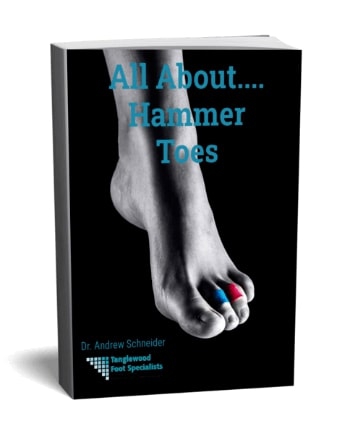What is an Irish pinky toe? This term doesn't mean your toe is green. And it has nothing to do with your ancestral country of origin. Rather, if you've heard your little toe described as 'Irish,' that means it's smaller than average, curved or unusually shaped. As a result, it tucks under the neighboring toe, increasing your risk for some painful problems. Want to reduce your risk for complications caused by the shape of your pinky toe? Keep reading to find out how we can manage this condition in our Houston podiatry practice.
Signs of an Irish Pinky Toe
This term can describe several different changes in the size, shape or position of your small toe. It could be smaller than 'normal,' either in length or width. The toe could have an angular structure, and it could curve inward or outward. Sometimes, it could tuck under the neighboring toe due to these structural differences. The nail on the toe may also change in appearance due to pressure or damage to the nail matrix. Sometimes, the nail may thicken. At other times, it could split in two, making it appear like you have two nails on one toe. (This sub-condition is known as a petaloid nail.)
What Causes an Irish Pinky Toe? ![A foot with an Irish pinky toe]()
We're not sure exactly why your little toe takes on an unusual shape. But, while the condition may be slightly more common in people of Celtic descent, this is not a uniquely Irish problem. Rather, the shape of your pinky toe--and any resulting problems--seems to be a result of your genetics; the shoes you choose to wear; a previous trauma or injury; and the onset of arthritis or other medical conditions.
What Does it Mean When You Have a Small Pinky Toe?
On its own, having an Irish pinky toe is not a problem. But if your pinky toe rubs up against the neighboring toe, that could lead to pain. It may also increase your risk for certain complications.
When your small toe and its neighbor are pressed together, that increases pressure. In turn, you'll be more likely to develop corns or calluses on one or both of these toes. When the nail of your pinky toe comes under pressure, it could thicken or even sustain enough damage that it falls off. And, if you wear tighter shoes, an outward curving little toe may rub against them, causing pain and an increased risk for blisters.
Now, the problems don't stop there. If the nail on your little toe doesn't fall off, it could cut into the neighboring toe. And that can increase your risk for wounds and infections. Then, if you have diabetes, it could also raise your risk for ulcers.
Managing an Irish Pinky Toe
If you've got a small pinky toe and it's causing any bothersome symptoms, there are a range of available treatment options. First, we can talk about your sock and shoe choices. Many patients find that wearing thicker socks helps protect their little pinky toe from painful rubbing. They also tend to feel more comfortable in shoes with wider foot beds, since that can help protect your small toe from hitting the hard edge of your shoe.
If these adjustments don't reduce your discomfort, we can also try taping and padding your little toe. This is a treatment option we often employ for bunions or tailor bunions. (That's a bunion on your pinky toe. And yes, we do think it's odd that conditions affecting your little toe tend to have stranger titles than problems with any other digits.) By making simple yet targeted adjustments to the positioning of your toes, this treatment option can reduce pain and friction. In turn, your risk for complications will also be reduced.
Not getting enough relief from pads and changes in positioning? Now we can look at other options. Some patients may benefit from the support of a custom orthotic, to redistribute pressure across your foot, taking some of the load away from your little toe. Orthotics can also improve overall foot function, helping minimize discomfort. In some cases, we may fit you for a device that lifts just your Irish pinky toe, helping it remain in a position that doesn't cause rubbing or increased pressure. Finally, in some cases, we may recommend surgery to help realign the toe and to provide more lasting relief.
Help for Foot and Toe Deformities
Whether you're worried about "what is wrong with my little toe" or have concerns about any other toes on your feet, we're here to help. From hammertoes to bunions and more, when you come into the office as changes are just becoming noticeable, we can help manage symptoms and prevent complications, often with interventions that are completely non-invasive. But, if you wait longer and come in with signs of an Irish pinky toe such as painful corns or infected wounds, your treatment options will be more limited. And more invasive.
Want to help your toes and feet look and feel their best? Tired of staring at your toes and wondering, "why don't I have a nail on that toe" or why do I have so many little bumps and rough spots on my toes? We're here to help. Just reach out to Dr. Andrews Schneider by calling 713-785-7881 or by following this link to request a consultation. Whether it's a problem you were born with or one that's developed over time, our team is here to boost your comfort and reduce complications. And we always do so with the intervention that's least likely to disrupt your daily routine, and most likely to provide you with meaningful relief!















